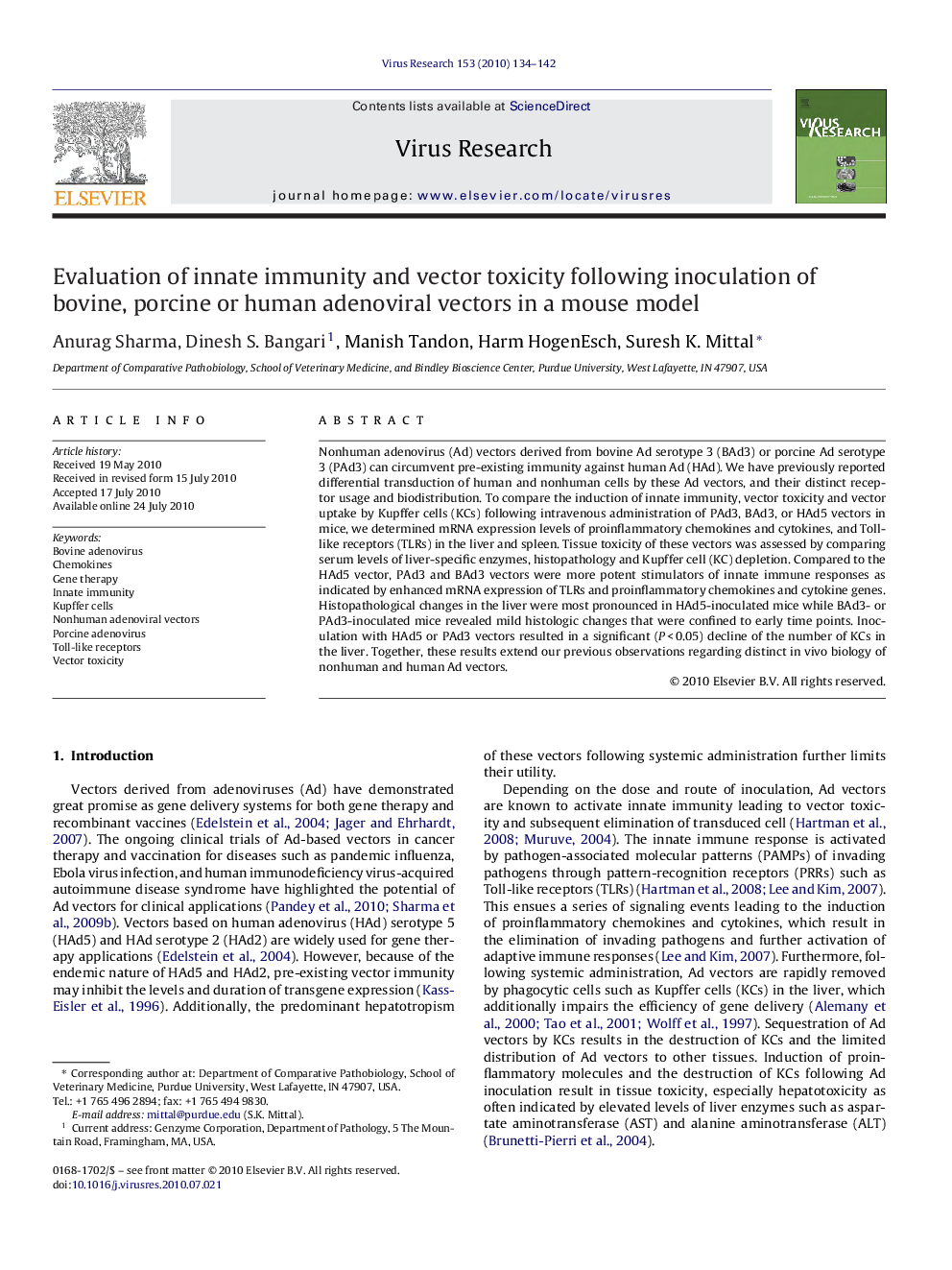| Article ID | Journal | Published Year | Pages | File Type |
|---|---|---|---|---|
| 3429339 | Virus Research | 2010 | 9 Pages |
Nonhuman adenovirus (Ad) vectors derived from bovine Ad serotype 3 (BAd3) or porcine Ad serotype 3 (PAd3) can circumvent pre-existing immunity against human Ad (HAd). We have previously reported differential transduction of human and nonhuman cells by these Ad vectors, and their distinct receptor usage and biodistribution. To compare the induction of innate immunity, vector toxicity and vector uptake by Kupffer cells (KCs) following intravenous administration of PAd3, BAd3, or HAd5 vectors in mice, we determined mRNA expression levels of proinflammatory chemokines and cytokines, and Toll-like receptors (TLRs) in the liver and spleen. Tissue toxicity of these vectors was assessed by comparing serum levels of liver-specific enzymes, histopathology and Kupffer cell (KC) depletion. Compared to the HAd5 vector, PAd3 and BAd3 vectors were more potent stimulators of innate immune responses as indicated by enhanced mRNA expression of TLRs and proinflammatory chemokines and cytokine genes. Histopathological changes in the liver were most pronounced in HAd5-inoculated mice while BAd3- or PAd3-inoculated mice revealed mild histologic changes that were confined to early time points. Inoculation with HAd5 or PAd3 vectors resulted in a significant (P < 0.05) decline of the number of KCs in the liver. Together, these results extend our previous observations regarding distinct in vivo biology of nonhuman and human Ad vectors.
